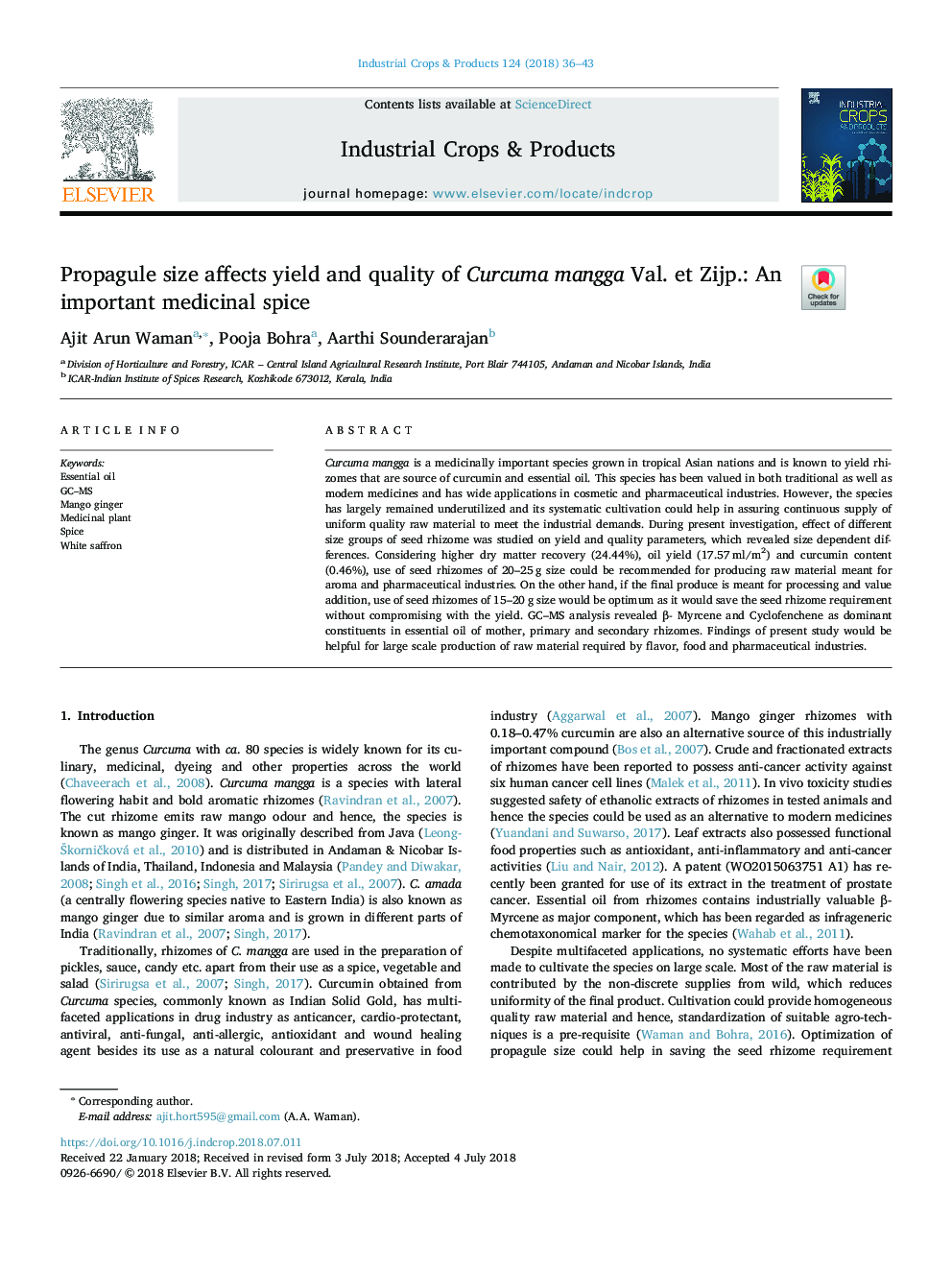| Article ID | Journal | Published Year | Pages | File Type |
|---|---|---|---|---|
| 8879485 | Industrial Crops and Products | 2018 | 8 Pages |
Abstract
Curcuma mangga is a medicinally important species grown in tropical Asian nations and is known to yield rhizomes that are source of curcumin and essential oil. This species has been valued in both traditional as well as modern medicines and has wide applications in cosmetic and pharmaceutical industries. However, the species has largely remained underutilized and its systematic cultivation could help in assuring continuous supply of uniform quality raw material to meet the industrial demands. During present investigation, effect of different size groups of seed rhizome was studied on yield and quality parameters, which revealed size dependent differences. Considering higher dry matter recovery (24.44%), oil yield (17.57âml/m2) and curcumin content (0.46%), use of seed rhizomes of 20-25âg size could be recommended for producing raw material meant for aroma and pharmaceutical industries. On the other hand, if the final produce is meant for processing and value addition, use of seed rhizomes of 15-20âg size would be optimum as it would save the seed rhizome requirement without compromising with the yield. GC-MS analysis revealed β- Myrcene and Cyclofenchene as dominant constituents in essential oil of mother, primary and secondary rhizomes. Findings of present study would be helpful for large scale production of raw material required by flavor, food and pharmaceutical industries.
Related Topics
Life Sciences
Agricultural and Biological Sciences
Agronomy and Crop Science
Authors
Ajit Arun Waman, Pooja Bohra, Aarthi Sounderarajan,
